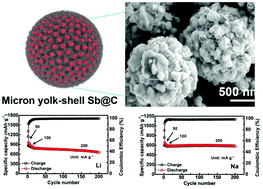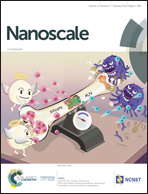A comparative study of pomegranate Sb@C yolk–shell microspheres as Li and Na-ion battery anodes†
Abstract
Alloy-based nanostructure anodes have the privilege of alleviating the challenges of large volume expansion and improving the cycling stability and rate performance for high energy lithium- and sodium-ion batteries (LIBs and SIBs). Yet, they face the dilemma of worsening the parasitic reactions at the electrode–electrolyte interface and low packing density for the fabrication of practical electrodes. Here, pomegranate Sb@C yolk–shell microspheres were developed as a high-performance anode for LIBs and SIBs with controlled interfacial properties and enhanced packing density. Although the same yolk–shell nanostructure (primary particle size, porosity) and three-dimensional architecture alleviated the volume change induced stress and swelling in both batteries, the SIBs show 99% capacity retention over 200 cycles, much better than the 78% capacity retention of the LIBs. The comparative electrochemical study and X-ray photoelectron spectroscopy characterization revealed that the different SEIs, besides the distinct phase transition mechanism, played a critical role in the divergent cycling performance.



 Please wait while we load your content...
Please wait while we load your content...